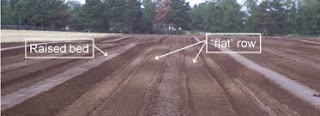Thursday, 17 March 2016
Greenhouse
A greenhouse (also called a glasshouse, or, if with sufficient heating, a hothouse) is a structure with walls and roof made chiefly of transparent material, such as glass, in which plants requiring regulated climatic conditions are grown. These structures range in size from small sheds to industrial-sized buildings. A miniature greenhouse is known as a cold frame. The interior of a greenhouse exposed to sunlight becomes significantly warmer than the external ambient temperature, protecting its contents in cold weather.
Nursery bed preparation
Sunday, 31 January 2016
Worms- How do you treat infected livestock
Cause
Worms living in the intestines of chickens fall mainly into four categories.
1. Roundworms (Ascarid), usually 5 to 7 cm (2-3 inches) long.
2. Hair worms (Capillaria), only measure 1-1.5 cm long.
3. Caecal worms (Heterakis), usually 1.5 cm long.
4. Tape worms (Raillietina, Davainea), usually 7 to 10 cm long, consisting of many small segments.
Worms living in the intestines of chickens fall mainly into four categories.
1. Roundworms (Ascarid), usually 5 to 7 cm (2-3 inches) long.
2. Hair worms (Capillaria), only measure 1-1.5 cm long.
3. Caecal worms (Heterakis), usually 1.5 cm long.
4. Tape worms (Raillietina, Davainea), usually 7 to 10 cm long, consisting of many small segments.
Women contributions to Agriculture cannot be overemphasized
Women contribute largely to agriculture by providing labour for planting, weeding, harvesting and processing resulting in 70 per cent of food crop production in the country.
Tuesday, 5 January 2016
Newcastle Disease (ND)
Cause
Newcastle disease is caused by a Paramyxovirus (APMV-1). Only one serotype of ND is known. ND virus has mild strains (lentogenic), medium strength strains (mesogenic), and virulent strains (velogenic).
The strains used for live vaccines are mainly lentogenic.
Transmission
Newcastle disease virus is highly contagious through infected droppings and respiratory discharge between birds. Spread between farms is by infected equipment, trucks, personnel, wild birds or air. The incubation period is variable but usually about 3 to 6 days.
Infectious Coryza
Cause
This is a bacterial disease caused by Avibacterium paragallinarum, (in the past known as Haemophilus paragallinarum). There are 3 common serotypes, representing different immunotypes: A, B, C.
Transmission
The disease spreads from bird to bird and flock to flock by contact and airborne infected dust particles and via the drinking water. Spread by equipment and personnel have also been reported. The incubation period varies from 1 to 3 days.
Aspergillosis (Fungal Pneumonia)
Cause
The principal fungus causing Aspergillosis in poultry is Aspergillus fumigatus.
Transmission
Transmission is by inhalation of fungus spores from contaminated litter (e.g. wood shavings, straw) or contaminated feed. Hatcheries may also contribute to infection of chicks.
Subscribe to:
Comments (Atom)




